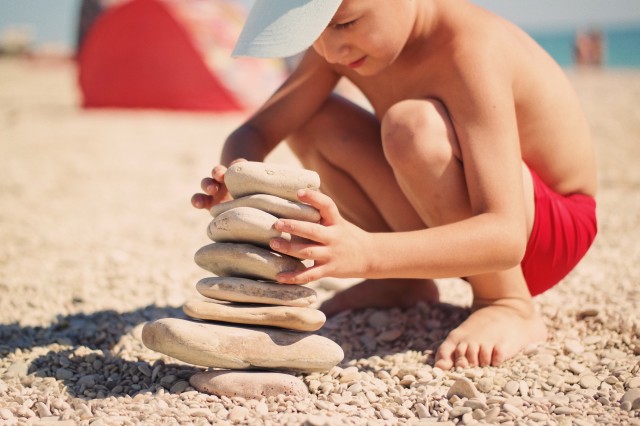
Many concerned parents have turned to youth sports as a panacea for inactivity, obesity, babysitting or scheduling woes or just to get kids away from screens and digital devices. Young moms and dads scramble to sign their toddlers up for swim lessons and soccer practice, for T-ball and tennis lessons. They hope that their children will learn to interact with other kids in organized play, that sports will teach them motivation and leadership or, at the very least, get them off the couch and out the door. We all hope that, in the heat of competition, our kids will learn what it takes to strive, drive toward a goal and succeed. Our intentions are good, but the end result can be surprisingly toxic.
Why do youth sports today — which on the surface appear to provide a perfect environment for children to learn life’s lessons and develop the critical social and physical skills they will need in later life — often actually hamper our children’s physical, social and emotional development?
To begin with, kids today are over-coached by controlling, command-oriented youth coaches. As Jenny Levy, head coach of the University of North Carolina’s 2013 National Champion women’s lacrosse team, puts it, “Kids are kind of like overbred dogs, mimicking the drills we run in practice. They aren’t wired to think creatively. They do what they know. What’s safe.”
She’s right. All across America coaches I speak with at the youth, high school, college and professional level — to say nothing of teachers, professors and job recruiters — echo this sentiment. Kids today cannot think outside-the-box.
According to Levy, starting at a young age, there’s always been an adult telling our kids what to do, where to stand, when to move. “They may be talented, or physically fit, but if I want them to be creative,” she says, “I have to retrain them.”
And this is not a sports specific conundrum. Kevin K. Parker, professor of Bioengineering and Applied Physics at Harvard, says it takes him years to deprogram students who have been taught in conventional classrooms. Only then can they become innovative, creative thinkers in a laboratory setting. “One of the biggest challenges I have is taking [those] straight-A students and pulling them outside the box. They are raised in a classroom making straight A’s. You ask them into a lab, and you are asking them to tear apart everything they know, everything about their safe zone.”
What coach Levy does to combat this dearth of executive functioning on the field is design practices which promote creative thinking and adaptability. She’ll change the rules and parameters of a drill or practice game on the fly to force her players to devise ways to adjust. “The key is to switch things up on them so that they always feel a little bit uncomfortable and have to figure things out for themselves,” she says.
Can We Drill Our Way To Success?
What it all boils down to is a prevailing parental misconception that kids need to be drilled and trained in a regimented setting from early childhood so that they can acquire and hone the skills they’ll need to succeed on sports fields, in classrooms and in later life. Yet what our children truly need is a more nurturing, protected childhood. They must be given the opportunity to develop at a slower, more natural pace, shielded from cultural and technological pressures and protected from the goal oriented, win-at-all-costs mind-set which has infected so many success-crazed parents.
Most importantly, kids need to be left alone. To be, well.. kids. Because what they learn when they are left to their own devices, and from each other when they romp around in the backyard, goof off at the park, run through the woods or frolic at the beach, is what best prepares them for the trials, tribulations and adjustments they will face as adults.
For decades early childhood teachers, developmental psychologists and neuroscientists have all championed the critical role of “free play” in the healthy development of children. “One of the best predictors of school success is the ability to control impulses,” wrote Erika Christakis, MEd, MPH, an early childhood teacher and her husband, Nicholas Christakis, MD, PhD, a professor of Medicine and Sociology at Harvard University, in a 2010 CNN article. “Every day where we work, we see our young students struggling with the transition from home to school. They’re all wonderful kids, but some can’t share easily or listen in a group. Some have impulse control problems and have trouble keeping their hands to themselves; others don’t always see that actions have consequences; a few suffer terribly from separation anxiety. We’re not talking about preschool children. These are Harvard undergraduates whom we teach and advise. They all know how to work, but some of them haven’t learned how to play.”
If free play is so critical, if it’s out there among friends (and foes) that children witness and learn about each other’s emotions and develop collaborative skills; if children develop empathy and self-regulatory abilities when they play imaginatively, why are we — as a society — so hell-bent on hyper-structuring our children’s waking non-school hours (if we have the time and can afford it)?
Truth be told, all this fast-tracking, driven by a win-at-all-costs mindset, has tremendous personal and societal costs. To name just two, there are myriad individual kids who start training too much, too soon and quit sports in their early teens with lifelong debilitating injuries (like ACL tears, shoulder and elbow damage, and cognitive dysfunction due to concussions) and there is the one billion dollar emergency room visit tab run up each year in America directly due to youth sports injuries.
As a society we need to band together and work to develop more practical, holistic sports activities for all of our children, so that they develop not only into strong, capable, healthy young athletes, but also nimble, creative, socially engaged citizens of the world. ♦